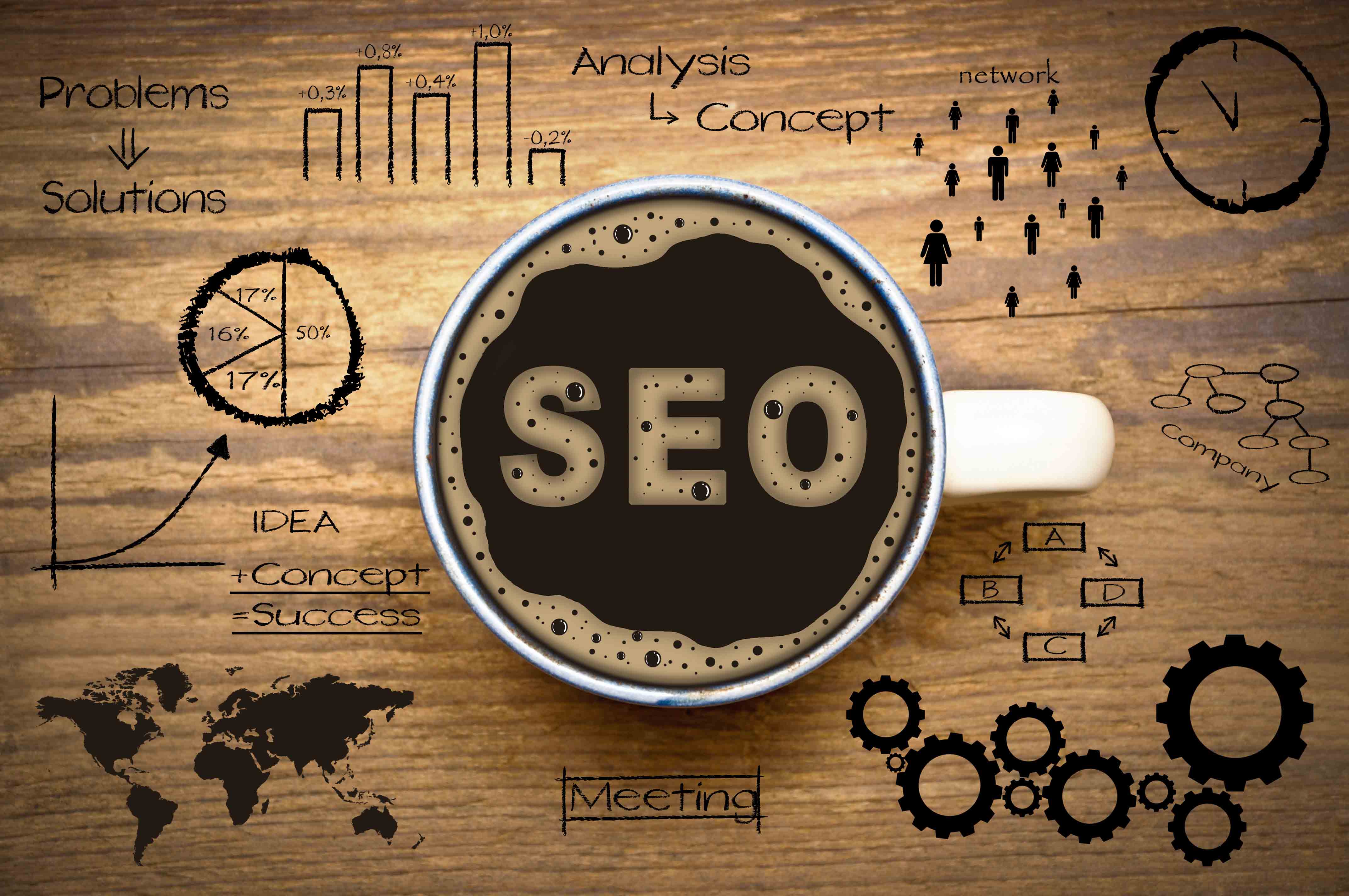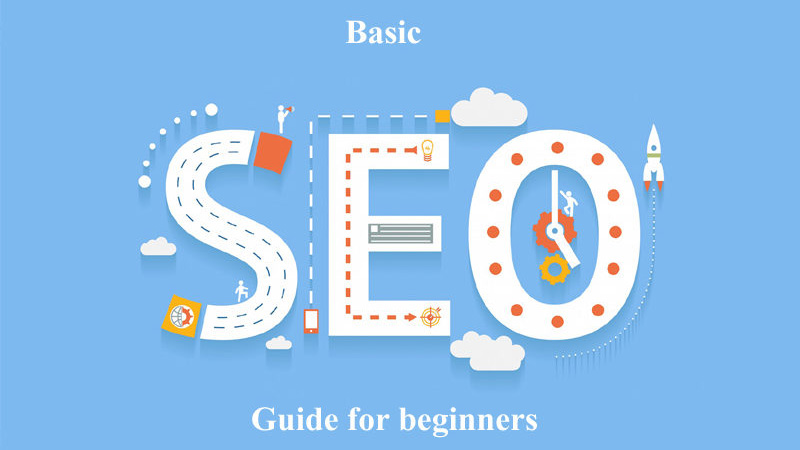Before we dive into specific techniques and aspects of how to learn SEO in 2019, let’s start with the basic stuff in the first chapter. Are you ready? Welcome to the ultimate SEO basic guide for beginners!
Are you new to SEO? Do you wonder how it works and what matters most in 2019? You’re at the right place!
So Now, let’s get started!
SEO Basic Guide: Essential Techniques for Beginners
Discover our comprehensive SEO Basic Guide, offering essential tips and strategies to enhance your website’s visibility and performance in search engine results.
What is SEO?
Search engine optimization (SEO) is a process of improving positions in organic (non-paid) search results in search engines. The higher the website is, the more people see it.
The history of SEO dates back to the 90s when the search engines emerged for the first time. Nowadays, it is an essential marketing strategy and an ever-growing industry.

If you want to learn SEO, you should be ready for a lot of creative, technical and analytical work. There are many techniques with different goals, however, the main point will remain the same – to be among the highest results in organic searches.
Simply said, SEO is about running the right website for the right people.
It isn’t only about a perfect structure or technical background of the website. Your website has to be filled with quality and well-optimized content tailored to the needs of your audience. And of course, it has to be good enough to be linked from other websites.
Is SEO difficult?
Search engines such as Google, Bing, Yahoo! and others index websites to create an order based on various ranking algorithms. Can we identify these algorithms? Yes and no.
Google uses more than 200 ranking factors. Though we know many of them: quality content, backlinks, or technical things such as site speed, there are many of them kept as a secret.
Of course, you don’t need to know all the factors to rank with your website. To understand what SEO is all about, imagine a bowl of soup. There are three important aspects:
- The bowl represents the technical stuff behind the website (technical and on-page SEO) – without proper bowl, the soup would spill all over the table.
- The soup represents the content of your website – it is the most important part. Bad content = no rankings, it is that simple.
- The seasoning represents the quality backlinks increasing the authority of your website – the last ingredient to make your SEO soup perfect.

The search engines are used by internet users when they are searching for something. And you want to be that “something. It doesn’t matter whether you sell a product, service, write a blog, or anything else, search engine optimization is a must.
Your website needs to be indexed by search engines. Otherwise, you’re lost.
Wise SEO activities improve your rankings in the search engine results page (SERP). Higher rankings mean higher traffic. If the traffic is engaged, it will bring conversions.
To sum it up, if you plan to succeed with your website, you need to do SEO. Some aspects are more complicated, but very often, the SEO success stands on common sense and a few best practices.
How can I learn SEO? Do I need someone’s help?
Even the basic changes can make a huge difference in how search engines see your website. In this ultimate SEO guide for beginners, we’ll cover all the critical topics and SEO basics. You’ll gain enough knowledge to proceed with SEO on your own.
If you wonder how to learn SEO in 2019, we have a simple answer for you: You’ll need a lot of study and practice. The good thing is that you’ll find tons of information on the internet for free (including this SEO guide) but you should choose wisely. On top of that, you can attend various courses, classes or webinars.
If you don’t want to bother yourself that much or don’t have time, you can ask SEO consultants, specialists or agencies for help. Keep in mind that this way won’t be for free compared to this guide.
You can also Boost Your Site’s SEO: Proven Strategies for Better Rankings
SEO terms vocabulary
- On-page vs. off-page SEO
- White hat vs. black hat vs. grey hat SEO
On-page vs. off-page SEO
Doing On-page (on-site) SEO means optimizing your website to affect the organic search results. It’s everything you can do on the website – from content optimization through technical aspects:
- meta tags
- headings
- URL structure
- images optimization
- content
- structured data
- website size and speed
Off-page (off-site) SEO covers all activities you can do to improve the website SEO authority through getting backlinks from other websites. There are many ways to get them:
- email outreach
- guest blogging
- submissions
- social media efforts
- cooperation with influencers
- writing valuable content, so people would love to link to your website
White hat vs. black hat vs. grey hat SEO
Black hats vs. white hats have their origin in Western movies. It’s like bad guys vs. good guys. But don’t take these words too seriously. Opinions on both SEO approaches tend to differ.

Black hat SEO is a set of unethical practices to improve rankings of a website in the search engine results page. They are designed to affect search engines while not taking human factor into consideration.
Black hat SEO can get you to the top of the SERP in a short time, however, search engines will most probably penalize and ban the website sooner or later.
Lists of violating practices can be found in Here.
White hat SEO is a set of ethical techniques sticking to the guidelines and rules. The basic parts of white hat SEO are:
- quality and relevant content
- overall website optimization
- link building
White hat SEO is a long-term strategy oriented to improve the user experience. Generally speaking, being a good guy in the world of SEO is considered the proper direction.
Grey hat SEO techniques that do not fall into either black hat SEO or white hat SEO are often called gray hat SEO. In general, the SEO public is more tolerant to them as they do not really harm anyone although gray hat SEO definitely isn’t “playing by the book”.
Let’s compare these two backlinks:
The first backlink is bought from a PBN made specifically to sell backlinks. The article contains 500 words and does not provide any added value to the reader. Actually, the website has no traffic at all and it links to anyone who is willing to pay.
The second backlink is bought from a high-quality website in the same niche as your website. The article where the link is placed is well-researched and gets some real traffic. People reading the article actually want to visit your site via the link, as it provides added value and makes sense in the context of the topic.

Leave a Reply